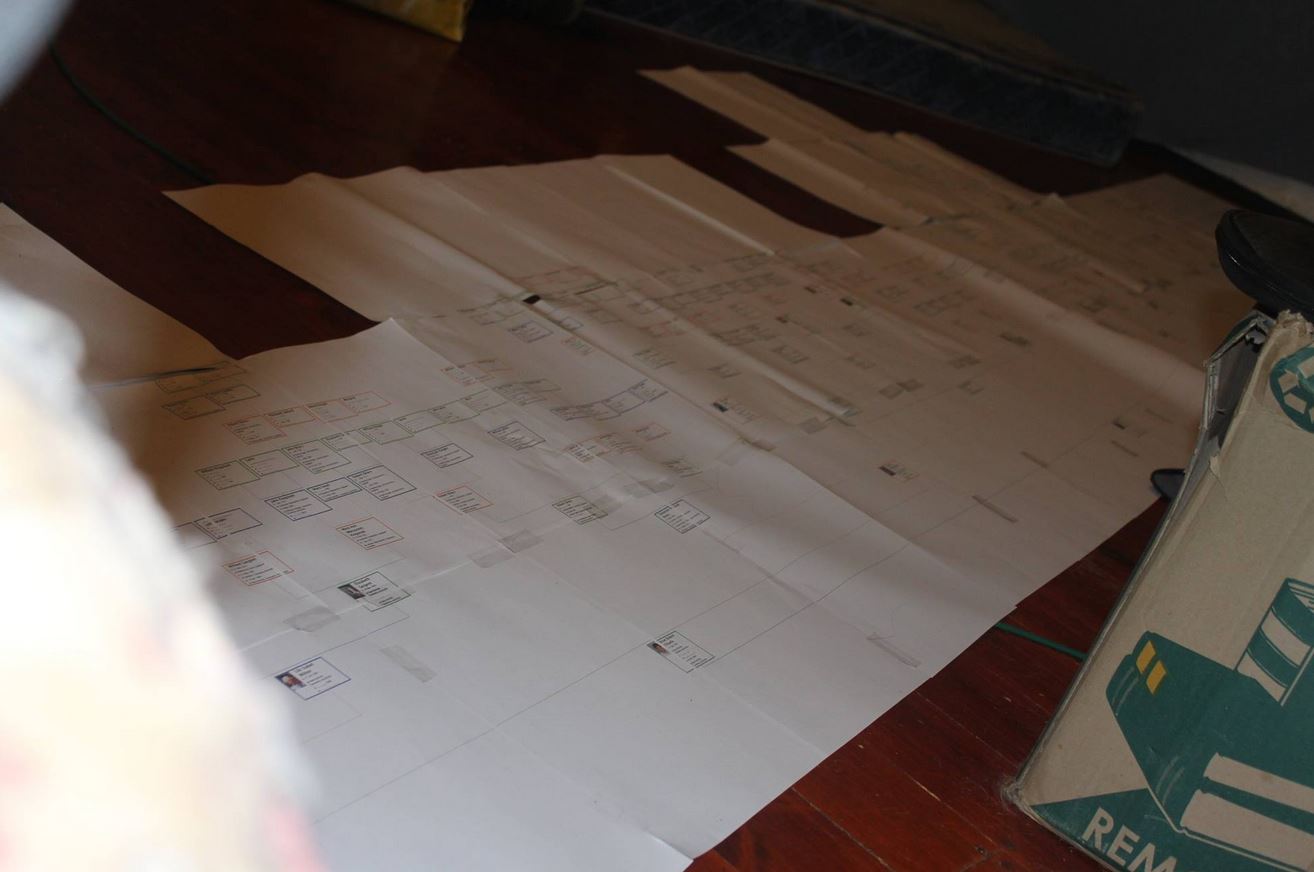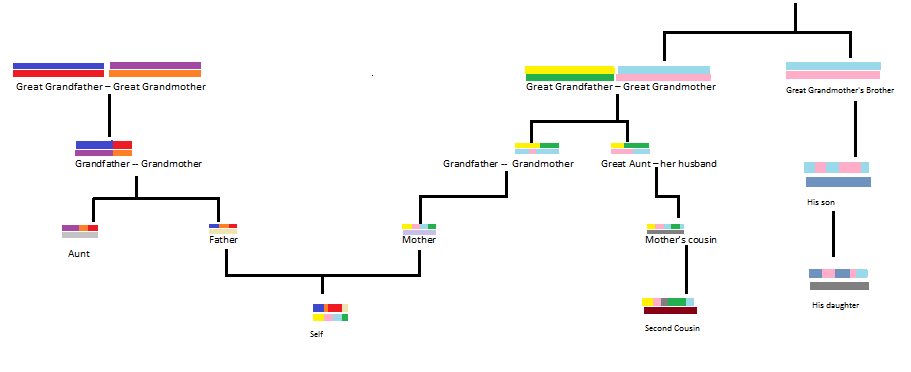After three years of contacting fellow researchers while seeking Annie McLeod, I have become quite friendly with some of them. We still share our frustrations and little successes, we still throw thoughts and mad ideas at each other for feedback. We have very nearly formed an unofficial South Australia McLeod Researchers Support Group.
Since I recognise the difficulties fellow McLeod researchers are facing, I decided to devote this blog entry to my search for Annie – a challenge revived by the DNA match results. I am of course aware that my connection to this cousin might be in another line, but this one is so close, so promising, that I have felt driven to pursue it further.
Annie said she was aged 22 when she married in 1866, giving her a birth year of 1844. She resided in North Adelaide. I have attempted to find McLeods in the directories of the time at this address, but the results are inconclusive. The directories refer to ‘Mr McLeod’ without giving first name, occupation or street address. I have found various Mr, Mrs and Miss McLeods amongst the unclaimed letters lists, of Adelaide, Port Adelaide and North Adelaide. Once again, without further details this does not help.
The first certainty was the marriage so I shall start there.
After James and Annie married, they lived at Normanville near James’ parents for about 18 months. Their eldest child John James Dunstall was born here in 1867. Sometime after his birth they headed north and inland.
By the late 1860s the population of South Australia had increased drastically. The state has very good land near the coasts but is arid and inhospitable the further inland you go. Along the Flinders Ranges there is good farming land but even here the rivers are mostly seasonal. Colonists who followed the Murray River to the north east found they could make a go of it. Those who headed for the Clare Valley, north of Adelaide, found pockets of good pasture, good rainfall, good conditions for viticulture. Those who kept to the coast, heading west to the Yorke Peninsula or even further west to the Eyre Peninsula were able to sustain themselves by combining farming and fishing. Slightly inland were good metals and mines popped up all over the place, mostly owned by wealthy Englishmen who provided employment but the working conditions were tough.
James and Annie Dunstall headed for the Clare Valley, for reasons I had never fathomed. In the light of the DNA test, I considered the possibility of Annie having family there already. I searched the birth, death and marriage indexes for McLeods in Clare and found many.
The little village of Stanley Flat is situated about 6km northwest of the township of Clare. I began to notice how many times the surname McLeod popped up in connection with this little village and felt maybe I was onto something.
Firstly, the birth of James and Annie McLeod’s second child, Charles Guy Dunstall, was at Stanley Flat in 1869. This one had definite relevance to me. Secondly, my newly discovered cousin’s ancestor John McLeod was married at Stanley Flat in 1871 to May Witcomb. By this time James and Annie had moved to the little town of Templers, some 80km (50 miles) south towards Adelaide. Still relatively close.
Thirdly, there were a plethora of others there – Mary McLeod the wife of Donald McKinnon, Alexander McLeod and wife Marian Morrison raised a family nearby, Donald McLeod and Mary MacKenzie, Malcolm McLeod and Isabella McNeil … it was a large group and I spent some time sorting them out. Some sorted nicely, a few remained strays. Amongst the strays were my James and Annie and my connection’s John and May.
I wasn’t onto something at all. It was just a whole lot of McLeod families with no obvious link.
James and Annie remained at Templers for about five years.

Templers as it is today: a cluster of houses at a main highway intersection.
The third child in the family, Kenneth Norman Dunstall, was born in Templers in February 1871. The name suggests to me that Annie’s father was actually Kenneth and maybe … just perhaps …. her grandfather’s name was Norman?? I have had no luck researching Kennis McLeod. Was it just her Scottish accent?
Tragically, Kenneth died at eight months of age and was buried in Willaston Cemetery. The cemetery only holds graves for fifty years and the plot has been reused so there are no clues to be found there. The burial record simply gave his name, age, father’s name and residence of Templers.
William Herbert was born in 1873, also at Templers, and he is my great grandfather. He was known all his life as Herbert and I pondered this too. Was there another William around to distinguish him from?
Between 1873 and 1875 the family then made the big move west to the Yorke Peninsula, settling on a property called Orrie Cowie. The nearest town was Warooka but they were rather isolated at Orrie Cowie, along the western coast of the peninsula. After a bushfire which damaged property in 1880 an inquest was held including the following:
James Dunstall, farmer, said the fire occurred on December 16. He first noticed it at about 10 minutes to 2 p.m. No men had been working near the place that day, and he had not the slightest idea how it occurred. By a Juror— Had not seen glass-bottles about there. There was not much traffic on the coast-track there.
Two years ago I went to see the place where they lived and it is the same today. The statement ‘There was not much traffic on the coast-track there’ is very much an understatement. They would have gone days without seeing anyone other than those who lived there, except perhaps aboriginal tribes (who were eventually blamed for allowing the fire to occur).

Near Warooka on a summer’s day
Ernest Guy Dunstall was born at Orrie Cowie in 1875 and Lewis Liston was born in 1876. How Annie coped on an isolated station with all those young boys is anyone’s guess. From what we can tell the boys were responsible and helpful. However, the family were beginning to do it tough.
Annie Isabella Dunstall, their first daughter, was born at Orrie Cowie in 1879 and Martha Florence Dunstall was born in 1882.
In 1883, James Dunstall died of tuberculosis and was buried at Warooka Uniting Cemetery. His father posted a notice in the paper. Annie, with the help of fifteen year old John and thirteen year old Charles, kept the family together.
It really looks to me as if they were struggling, but it seems they did not ask for help from any family members. Perhaps they thought they would pull through. Perhaps Annie had pride. She held on for three more years before she became ill enough to make out her will, anticipating that her children would become orphaned and asking that her sons John and Charles act as guardians to the younger ones.
Annie died on 9th June 1887. Her death certificate states cause of death phthisis. She was the widow of James Dunstall and her residence was Orrie Cowie, Warooka. The informant was her son John James Dunstall. At the age of 19, he had suddenly become responsible for a family of seven. There was no notice in the paper when Annie died.

Headstone for Annie Dunstall, placed on her very unmarked grave only a few years ago. No clues to be found here.









